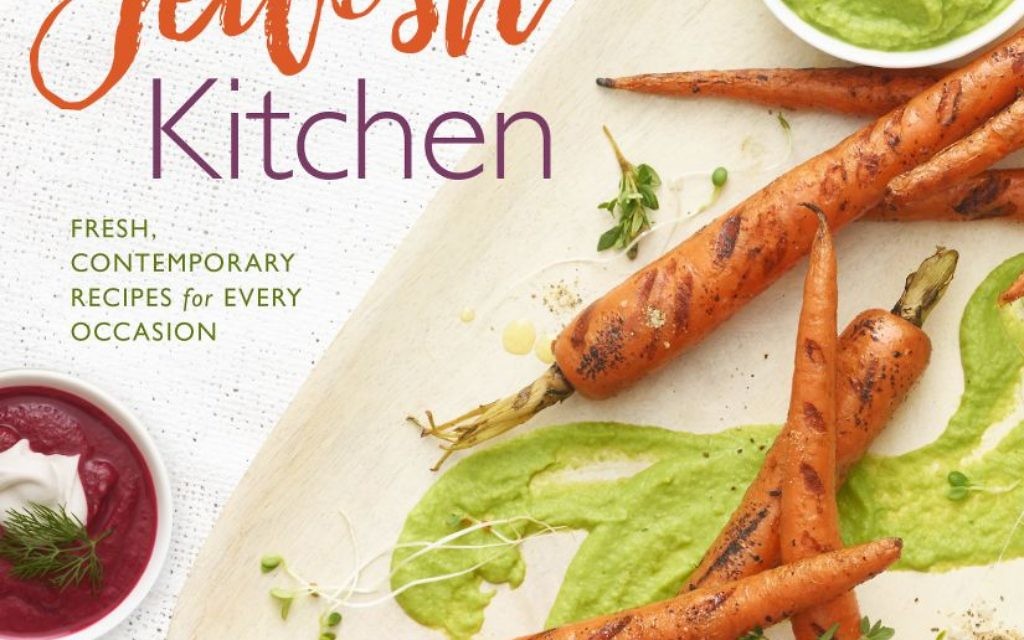How to Eat Healthy At and After Pesach
Paula Shoyer shares healthy recipes from her childhood in her new book “The Healthy Jewish Cookbook”.
“The Healthy Jewish Cookbook” began as a request from chef Paula Shoyer’s editor to write a kosher cookbook from a healthy angle.
She accepted the proposal first as a preoccupation. The challenge then became a mission, evolved into a way of life and resulted as a gift. Shoyer’s introductory letter to readers calls it “A Healing Project.”
Shoyer was grieving the loss of her mother when Sterling Epicure approached her about writing her another cookbook in late 2015. She was low-energy and distraught, but she decided that “I can’t sit on the sofa forever, and I love writing recipes and cookbooks, so I agreed to write the book.”
Get The AJT Newsletter by email and never miss our top stories Free Sign Up
Recipe development went well, feedback was positive, and Shoyer found that the writing process provided her not only a distraction, but also a newfound focus on healthy kosher preparation.
“Eating food that was more natural and not having processed products in the recipes made a big difference. … I started to lose some of that grieving weight,” Shoyer said.
She began to look and feel better and realized she was on the path to something that produced tangible results. “As time went on, this project literally brought me back to life and gave me purpose.”
“The Healthy Jewish Kitchen” is the Paris Ritz Escoffier-trained chef’s fourth kosher cookbook but the first with an eye toward natural ingredients, whole grains, reduced sugar and salt, and healthy preparation, all while maintaining her trademark flavor and approachable style.
The “Healthier Pantry” section at the front lists many of Shoyer’s ingredients and favorite kitchen tools and explains her rationale for choosing them. “Menu Suggestions,” broken out by holiday, can give even the least confident cook self-assurance with meal planning.
As in previous books, each recipe leads with the number of portions served and a brief story about Shoyer’s inspiration for the dish, as well as prep and cook time, advance preparation steps, and necessary equipment. Just below each entry in this book, however, is a notation about whether the dish is meat, dairy, fish, vegetarian, vegan, parve, kosher for Passover or gluten-free. Many also feature a box with special cook’s tips.
Shoyer said a lot of the recipes came from her childhood but are updated and healthier. She devised a lighter option for coleslaw and created a recipe for baked latkes instead of fried.
The new recipes have become mainstays in her home. “I keep going back to this cookbook,” Shoyer said. “I really love this food.”
She said she is especially proud of the side dishes, many of which are vegetables that can be served at room temperature, so they are easy. She said her children even request the vegetables and get excited about them just as others get excited about cookies.
With so many soups, salads, and gluten- and meat-free options, about half the recipes in “The Healthy Jewish Kitchen” are Passover-friendly, Shoyer said. Beautiful photographs of the fresh ingredients and finished products are provided throughout.
From Apple, Squash and Brussels Sprout Salad to Baked Schnitzel With Nut Crust (both Passover-kosher), Shoyer’s recipes are wildly creative, yet the ingredients are attainable at most grocery stores and healthy food markets. For those seeking further gustatory rewards, the “Desserts and Breads” section is the largest in the book. Each recipe is just a healthier version of its predecessor.
Shoyer’s recipe for chocolate quinoa cake, featured on the front of the March 23 AJT, was chosen March 14 as a Genius Recipe on the popular blog Food 52.
“It’s been exciting to move to food from desserts as well because I feel like I can have an impact on all aspects of people’s holidays and meal planning,” Shoyer said. “It’s all about balance. I’ve found a way to enjoy delicious, natural, healthy food so that when I want to have a piece of my chocolate quinoa cake or my Linzer tart or my babka, I can do that with no guilt.”






comments